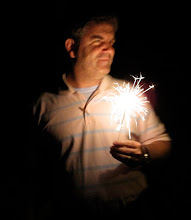On a recent trip to Mexico, my wife and I were informed by the proprietor of the bed & breakfast we had chosen to stay at that "the plumbing isn't so good here," but we should be satisfied by the overarching reason most people leave happy - "the location is great." At the end of the visit, we were in fact happy . . . so, I guess she was right.
"Plumbing isn't so good" didn't refer to the selection of faucets or the toilet style, she was talking about the flow of water - both supply (in this case, hot water) and capacity of the drains. Bad plumbing tends to be about improper movement of water: too slow to drain, or come out of the tap-- Or, in the case of a leak-- coming out where its not supposed to--
One Step Beyond
Most building problems involve too much or too little flow (water, heat or electricity) - How's that for a bold generalization?
Think about the last time you had a serviceman to your home-- I bet it was for a stopped-up pipe, air conditioning that wasn't blowing cold air, or an electrical device that wasn't operating properly (not getting 'juice') --- Am I right? And I haven't even been to your house--
Consider these examples of common household repair problems:
- Roof Leaks
- Flashing or Caulking Leaks
- Slow Draining of Shower or Toilet
- Supply or Drain Line Leaks
- Stopped Up Sewer Drain
- Ponding on Flat Roofs or Parking Lots
- Erosion (due to excessive flow or channel failure)
- Insulation Leaks
- Electric Short Circuits
- (Insert your own household problem here)

OK Popeye, What's the Fix?
Here are some thoughts to help avoid many of these problems:
- Water Flows Downhill - Ample slope is needed (top to bottom) and opening sized to allow proper speed of discharge.
- Water Pressure Can Be a Powerful Force - More water volume and restricted flow each can create increased pressure. Think about "pinch points" (desired and undesired), and problems can be avoided.
- Water Seeks It Own Level - Think about where the water "wants to go" (during rain, when the tap is on, when the drain is open, etc), and help it get there.
- Energy Transfer Needs a Conductor - For Heat, sealed air is the best insulator (conversely, open air is the cause of most heat/cooling transfer problems). For Electricity, overcurrent insulators are sized based on the amount of amperage in the conductor, to avoid danger in handling or routing the lines (short circuiting occurs when electricity "jumps" the insulator).
So I'm Told--
This is not to say, I have solved all my household problems or even that I can solve them all myself - More often than not, these days I hire a professional. But I am at least more able to identify the problem, and help the pro get right to the fix.
Pros to Contact:
Here are some helpful Professionals I have worked with in the past on the Commercial Construction side:
PSG Consultants (no website) - Phone: (763) 755-4777
George D. Alan
ReevCon
New Millennium Engineers
Links to two Popeye cartoons (neither one results in a "fixed" problem at the end):
The Plumber Is A "Pipe"
House Builder-Upper
